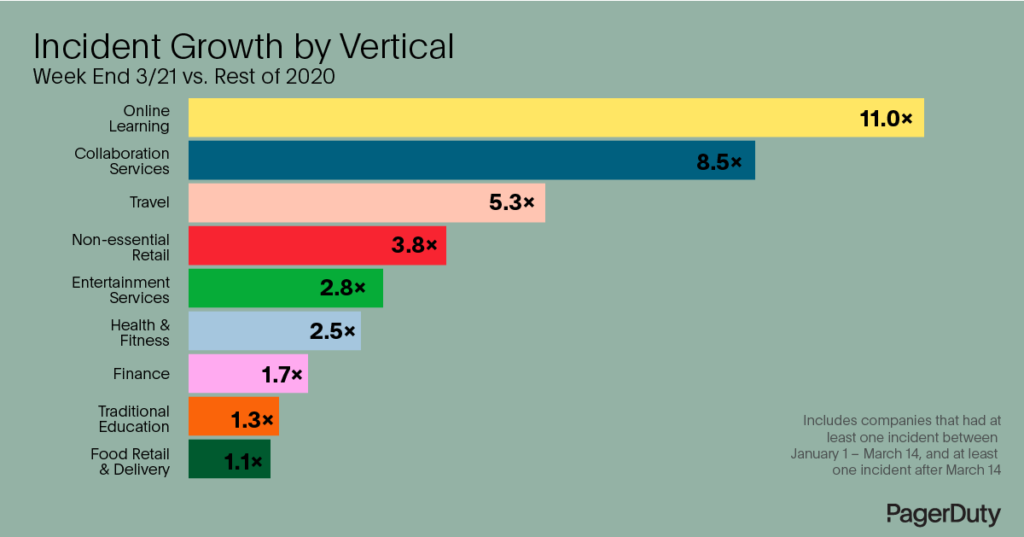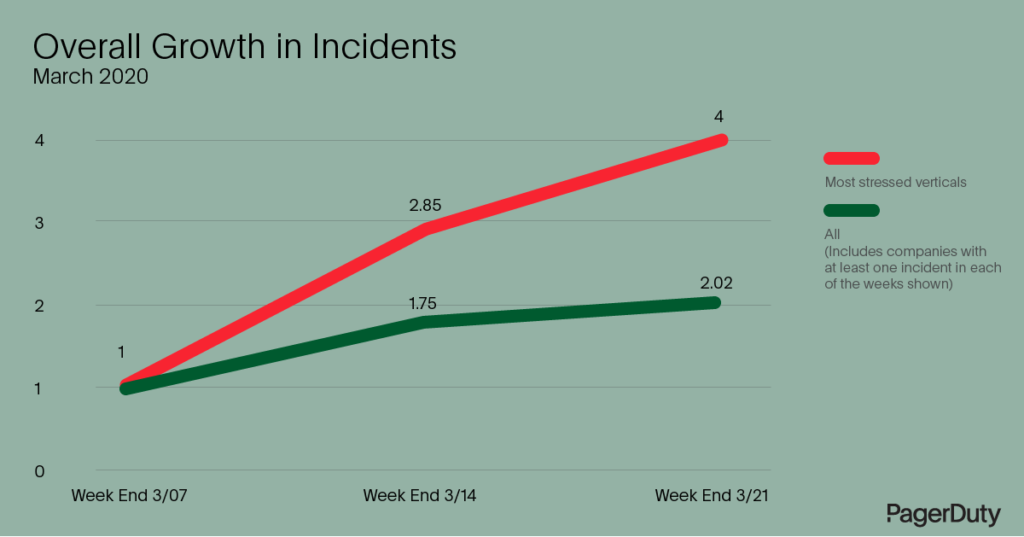- PagerDuty /
- Blog /
- Digital Operations /
- Keeping the Internet “Always On”—the Pressure of COVID-19 on Incident Response Teams
Blog
Keeping the Internet “Always On”—the Pressure of COVID-19 on Incident Response Teams
Social distancing measures, like remote working, school closures, and “shelter in place” have driven us onto the Internet more than ever before, creating unprecedented demand for a range of digital services from companies, many of whom weren’t set up for this type of pressure.
As a digital operations company, we help teams ensure their websites and apps are running perfectly and partner with over 12,000 organizations around the world—from start-ups to 58 of the Fortune 100. This puts us in a unique position to shed light on how much strain the tech infrastructures that power our digital services are facing, and how the teams behind them are handling the demand to keep us “always-on.”
Companies in ‘Highly Stressed’ Verticals Face up to 11x the Number of Incidents
We’ve peeled back the cover on digital demand in the last few weeks and found that the current situation is causing surging growth in the number of incidents that companies are experiencing. Most incidents are not service interruptions or failures; rather, they are signs of stress to the system from changes such as a sudden increase in web traffic, or new code or infrastructure introduced to the system. Incidents like these cause impacts to the customer experience if not addressed quickly and proactively.
When looking at the volume of incidents, our data shows two notable trends:
- Many organizations are under significant stress. Companies in certain verticals are experiencing up to 11x the number of incidents, meaning their teams are likely in crisis mode, handling a huge increase in workload, and constantly taking action to prevent service interruptions. Highly stressed verticals include online learning platforms, collaboration services, travel, non-essential retail, and entertainment services.
- Organizations across the board are under increased stress. Outside of the above group, all companies on the PagerDuty platform are experiencing, on average, double the number of incidents, demonstrating that online demand is up in general.


This level of increased activity puts a strain on IT teams and leadership to triage and resolve incidents as they arise, to ensure they are able to serve their customers. This is a hard thing to do—not only are these companies dealing with far more digital pressure, they also have to develop new processes to account for remote working, adjust for new IT services and infrastructure needs on-the-fly, and in many cases spin up their own crisis response teams.
As the world around us continues to change, we’ll share more unique insights from our data on how teams on the front line of surging digital demand are adapting to ensure that our most critical needs are met.
For more information about scaling incident response teams, crisis management best practices, and remote working tips and tricks, check out our COVID-19 resource center.


